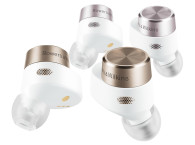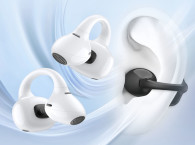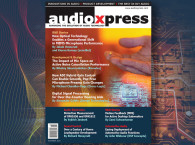
ANC technology has come a long way since its first commercial applications in the late 1980s. The first consumer ANC headphones were primarily aimed at frequent flyers who wanted to reduce the roar of airplane engines. Early ANC systems relied on analog technology, but modern ANC systems in headphones typically utilize digital signal processing and digital control systems. The basic principle remains the same: generate an opposing sound wave that cancels out the noise. Companies such as Bose, Sony, and Apple have become leaders in the consumer ANC headphone market, continually pushing the boundaries of what’s possible with each new product release.
Most of the innovation happens in a commercial context. Academia often focuses on principle analysis, and makes assumptions which are simplified and further away from real-world systems, and especially neglects the challenges of a robustly performant system.
Despite recent advancements, achieving optimal ANC remains challenging. Engineers must trade off the noise cancellation performance with stability, so that users are not exposed to a screeching howling noise, as well as robustness so that the system performs well in many diverse situations. To design a competitive ANC headphone, interdisciplinary competencies are required, including acoustic system design, electronics, signal processing, and intelligent control. Each component choice is key, as they can impose limits on the achievable performance.
Consumer expectations certainly add to the challenge. Users demand flawless performance in diverse environments, from quiet offices to noisy city streets, as well as a seamless user experience for audio listening, voice calls, and device controls. ANC also needs to coexist with transparency modes and upcoming hearing enhancement modes. All this adds to the complexity of the system.
Requirements for Accuracy in ANC
To underline how strict the requirements for achieving good ANC performance are, let’s consider a simple sine wave experiment. Two sine waves can be superimposed with varying amplitude and phase accuracy (Figure 1). This experiment has been conducted in literature [1]. Quintessentially, for an attenuation of 20dB at an arbitrary frequency the relative magnitude deviation needs to be less than 1dB and the phase deviation needs to be within 6°.

This is where the principles of feedback systems and adaptive systems, which can adjust to dynamically changing conditions come into play, as addressed in more detail later in the article.
While software plays a vital role, the acoustic hardware components of ANC systems are equally important. High-quality microphones are essential for accurately detecting ambient noise without introducing an audible noise floor. The placement of the microphones can also significantly impact performance. Aspects to consider for placing the microphones include the time advance in detecting noise, their ability to capture the disturbing sound, and crosstalk between speakers and the microphones.
The quality of the speakers also matters. High-fidelity speakers ensure that the anti-noise signals are reproduced accurately, without distortion, which is critical for effective noise cancellation. The ability to create the necessary level of anti-sound at a certain frequency generally limits what is possible in more severe noise situations.
The acoustics need to be driven by specialized hardware, which also allows for tailored ultra-low-latency processing. For the processing itself, a few aspects come into play—the latency of the system, the accuracy, the system complexity, processing power, and the flexibility to handle complex algorithms.
The latency required for an effective ANC system is far lower than other signal processing problems. For example, the latency for far-end speech enhancement or audio processing can be acceptable up to 200ms and latencies in the tens of milliseconds are common [2]. For speech enhancement in noisy environments, as in hearing aids, latencies are in the range of single-digit milliseconds, typically 4ms to 6ms. ANC, however, requires the latency to be one order of magnitude lower, ideally less than 50µs. Modern systems-on-chips (SoCs) often integrate low-latency processing engines, with 3µs to 20µs latency and varying degrees of adjustability.
Algorithmic Aspects of ANC
There are two major principles in active noise control: feedforward and feedback ANC.
For feedforward ANC, a disturbing sound is captured with a time advance before it reaches the eardrum, and an anti-sound is generated by filtering an outer microphone signal considering knowledge about the acoustic behavior of the headphones. Fixed ANC systems are designed once, for example, based on measurements of the electro-acoustic frontend, and then deployed. Some adaptive feedforward ANC systems also use information from the inner microphone to adjust to changes. The anti-noise signal is, however, still generated by filtering the outer microphone signal.
For feedback ANC, an inner microphone samples the current acoustic signal in the ear canal and feeds the signal back to create an anti-sound closed loop. This system must inherently be robust against instability and howling. However, feedback ANC is more robust against the fit of the headphone and the direction of arrival of the ambient sound, as it uses the inner microphone to monitor the current signal in the ear canal.
Figure 2 shows feedforward ANC in blue with the feedforward filter W(z) and feedback ANC in red with the feedback filter K(z). P(z) is the primary path describing transmission from outer to inner microphone and G(z) is the secondary path describing transmission from loudspeaker to inner microphone.

Hybrid systems combine feedforward and feedback ANC. For optimal performance, it is important to consider their interplay, so that the strengths of each approach compensate for the weaknesses of the other.
Various tuning principles have been developed over the years. However, dealing with the practical problems in a real working system, such as maintaining stability in all use cases and production variability, remains a practical challenge. Chip manufacturers often provide basic ANC tuning tools, which offer a means to manually tune the ANC filters, sometimes by simple pole-zero placement and observation of the simulated performance. This process is time-consuming and requires an extensive amount of know-how from the tuning engineer. To optimize this slow process, we at Elevear use our own proprietary optimization toolkit for tuning an ANC system that automatically considers the feedback-feedforward interaction and finds the best trade-off between performance and robust stability.
A consumer’s expectation is that ANC works in any situation and should never result in unwanted behavior such as howling. Non-adaptive systems must also be tuned to work well for the entire population of users and ambient noise scenes. Hence, the performance is a compromise, which may perform OK for most cases, but could be poor for some users and some ambient noise conditions. Non-adaptive systems often show impressive performance in individual cases or in lab measurements but often have shortcomings in the real world. To achieve the best result for any user, in any situation, adaptation offers clear benefits.
What Is Adaptive ANC Adapting To?
All adaptive systems are not built the same, and different systems can adapt to different things.
ANC can adapt to different environments. Noise environments vary significantly, from the steady drone of an office air conditioner to the erratic clatter of a coffee shop. An adaptive ANC system continuously monitors the incoming noise and adjusts its parameters to effectively counteract a wide range of noise frequencies. This flexibility allows the headphones to maintain high levels of noise cancellation across different environments, which is something traditional fixed ANC systems cannot match.
ANC can adapt to sound from different directions. Typical noises, such as airplane noise, often have a diffuse character with no directionality. However, there are also many cases where noise has a clear direction of arrival (e.g., the leaf blower on the other side of the street). For feedforward ANC, the time advance between the outer and inner microphone changes based on the direction of arrival, and, hence, the adaptive algorithm needs to react to it [3].
ANC can adapt to different fits. The way headphones fit on your ears can significantly impact the effectiveness of noise cancellation. A tight fit more effectively isolates the user from ambient noise, while a looser fit allows for more external sound to seep in while the loudspeaker response rolls off toward low frequencies. Adaptive ANC systems can detect these variations in fit and adjust their noise-cancellation algorithms to compensate, ensuring the best possible performance regardless of how the headphones are worn.
ANC can adapt to different people and personalize the performance. Everyone’s ears are unique and for the best ANC performance, the creation of the optimal anti-noise signal also would need to adjust to the different acoustic properties of people’s ears.
Types of Adaptions in ANC
Adaptive ANC can take several forms, each with its own approach to managing and canceling unwanted noise. Gain adaptation involves adjusting the sensitivity of the ANC system depending on the intensity of the surrounding noise. This relatively simple approach offers advantages over a purely static ANC, but has limitations, as it does not allow adjustment to frequency-dependent differences.
Some adaptive ANC systems use filter switching, where the headphone switches between different preset filters designed to cancel specific types of noise. For instance, one filter might be optimized for low-frequency sounds (e.g., engine noise), while another is better suited for mid-range sounds (e.g., chatter). The system chooses the best filter for the current noise environment, ensuring effective noise cancellation across a wide range of situations. However, this still only clusters the situations into a handful of cases. The intricate details of real-world and often complex scenarios are not considered.
A fully adaptive ANC system takes a more sophisticated approach by continuously adapting the actual filters based on real-time analysis of the ambient noise in conjunction, for example, with a gradient descent algorithm, which is designed to minimize a certain loss function, such as the power of the inner microphone signal. Instead of switching between filter presets, the system fine-tunes filters on the fly. In theory, this approach offers the best adjustment but often suffers from practical challenges which include:
- Ensuring robust convergence to a global minimum, which avoids converging into an undesired state that cannot be exited again, or even become unstable.
- Keeping binaural cues intact for a true wireless stereo setup and not altering perception of direction of arrival of ambient sounds.
- Tuning the convergence to mitigate temporal artifacts.
- The subjective perception of the constantly adjusting system.
Another approach is individualization, where the ANC algorithm is adjusted once after the headphones are inserted or put on. The tailored ANC algorithm can consider the personal hearing profile and adjust to a specific fit and ear shape.
Measuring ANC
Accurately measuring the performance of ANC headphones is crucial for both development and consumer information. The European Telecommunications Standards Institute (ETSI) has established a standard for measuring ANC effectiveness, the ETSI TS 103 640 standard. It outlines procedures for evaluating the performance of active noise-cancellation devices.
To simulate real-world conditions, manufacturers use dummy heads—artificial models of the human head and ears equipped with microphones to measure sound levels at an artificial eardrum. These dummy heads are designed to mimic the acoustic properties of an average human head, including the impedance characteristics of the outer ear. Analysis published by Sonarworks (Figure 3) showed the differences between various vendors’ dummy heads for the headphone transfer function. The obvious difference shows how important it is to use an appropriate ear canal simulator, and how difficult comparisons between measurements with different dummy heads are.

(Image courtesy of Sonarworks, www.sonarworks.com/blog/research/white-paper)

Practical Challenges in ANC Implementation
One of the practical challenges of ANC technology is dealing with external factors such as wind noise. When wind hits the outer microphones of ANC headphones, it can create turbulence that the system perceives as noise, leading to incorrect anti-noise signals. This can result in a degraded attenuation or even amplification of the wind noise. Algorithms can avoid making the problem worse, but ultimately only appropriate protection of the outer microphones from the wind noise (e.g., using mesh), can avoid the turbulence that masks the necessary ambient sound signals. Therefore, an effective solution always needs to utilize a combined passive and active solution.
Very low-frequency components, such as footfall sounds, are often more audible with current earbuds. None of the current closed earbuds have a full solution for this problem and often the ANC or transparency systems make the problem worse for very low frequencies. This problem arises from the occlusion effect, which has its origin in the conduction of structure-borne sound and requires a specialized solution, such as Elevear’s Occlear technology [4].
Maintaining system stability is another critical challenge for ANC headphones. When chasing the highest performance, the feedback system especially needs to ensure stability. At the same time, the feedforward system can result in nasty howling when it is not designed appropriately or tuned too aggressively, and the outer microphones are tightly coupled to the speakers.
Modern “always-on” headphones create audible system noise for the use when worn, as they play back the noisy microphone signals via the internal loudspeaker. This can deteriorate the user experience and may force engineers to make tradeoffs between system noise and performance. Unfortunately, the signal-to-noise ratio (SNR) of MEMS microphones that fit the small form factor of earbuds is limited, exacerbating the problem. At Elevear, we solved this problem with a super low-footprint and low-latency algorithm to reduce microphone and system noise. Elevear’s solution is called Idle Noise Reduction (INR) and is especially valuable for any transparency mode, but also applicable to ANC systems with a latency far below 1ms and a very low computational footprint.
One of the latest trends in leading products is to extend ANC performance up to higher frequencies, which usually means above 1kHz. However, due to various effects it becomes increasingly challenging to create an adequate anti-sound with higher frequencies. Challenges include the large variation in fit and the decreasing pressure chamber effect within the ear canal as frequencies rise. Figure 4 shows an example where additional performance was achieved with an Elevear tuning with attenuation up to 3kHz compared to the stock tuning of a leading earbud brand.

Form Factors and ANC Performance
In-ear, on-ear, and over-ear headphones are the most common form factors for ANC headphones, each with its strengths and weaknesses. In-ear and over-ear models typically offer the best ANC performance, due to a good combination of passive attenuation and a higher consistency of fit, which allows for good ANC and overall attenuation.
On-ear models often suffer from a mediocre ear seal, both creating problems in passive attenuation, as well as consistency of fit for ANC. Furthermore, their smaller drivers have less capability to create the necessary sound pressure levels for effective noise cancellation.
Open earbuds without silicone ear tips that are still seated at the entrance of the ear canal have been around for some time. Nowadays we see ANC is also making its way into these open earbuds. The designs inherently offer more challenges for ANC, due to the missing seal, including a significant variation in the fit and the loudspeaker not being able to create an anti-noise signal loud enough to cancel disturbing sounds. Combined with nearly no passive attenuation, the total insertion gain of open ANC headphones is no match of closed headphones. However, they have advantages in certain use cases such as natural ventilation of the ear, and not having problems with the occlusion effect, especially important for sports such as jogging. The most recent advancement into the field of open-ear ANC was announced by Apple with the AirPods 4. Measurements still must show the effectiveness, and the devices were not yet available at the time of this article.
Two relatively new categories share the open-ear approach and similar principal problems. Open-ear headphones, which rest in the vicinity of the ear, sometimes around the antitragus or hovering over the ear, as well as audio glasses, which incorporate speakers and microphones into the frame of eyeglasses. Compared to open earbuds previously mentioned, they have similar challenges plus the additional challenge that microphones and loudspeakers are further away from the ear.
For all three categories, there is still more performance possible, within the boundaries of physical limitations. More sophisticated adaptation may be a solution for different fits, however, expecting attenuation where the acoustic driver cannot drive the necessary sound pressure level (i.e., at low frequencies), is unrealistic.
The Future of ANC Technology
The future of ANC technology is likely to be shaped by several key trends. The development of next-generation materials and components, such as MEMS drivers with potentially lower group delay and less part-to-part variation and more advanced microphones that enable more effective and efficient noise cancellation. Additionally, ANC algorithms based on artificial intelligence and machine learning can lead to smarter noise cancellation systems with the ability to learn and respond to individual user preferences and environments. Elevear’s AI-based adaptive ANC showcases the potential by adapting to fits, environments, and users based on human perception. Thus, it offers optimal performance for every user in every situation.
Personalized ANC experiences, where the system tailors its performance to the specific hearing profile and preferences of the user, may also become more common. This could lead to a new era of highly customized audio experiences, where ANC technology not only cancels noise but also enhances the overall sound quality in ways tailored to each listener.
The combination of ANC with hearing enhancements will be one of the new areas where good ANC is a true enabler [5]. In this case, ANC is “cleaning up” the sounds within the ear, before infusing a noise-reduced version of the environment and reducing the impact overlays between passive and actively processed sound commonly resulting in so-called comb-filter effects, which degrade audio quality.
Additional upcoming trends include adding a multichannel ANC system, where there is more than one driver (e.g., woofer and tweeter), but also where there is more than one feedforward microphone and/or more than one feedback microphone used. These trends offer interesting new perspectives on extending the ANC by leveraging parallel systems.
Conclusion
Active noise control technology has come a long way since its inception, transforming the way we experience audio in noisy environments. While significant challenges remain, particularly in dealing with complex and variable noises, the future of ANC looks promising. Continued innovation in algorithms, hardware, and form factors will push the boundaries of what’s possible, bringing us closer to the ultimate goal of perfect noise cancellation. As ANC technology continues to evolve, it will not only enhance our listening experiences but also open new possibilities for personalized and immersive audio in a wide range of applications.
Elevear develops breakthrough audio technologies for hearables and hearing aids. We offer well-tested technical solutions including Elevear’s brand-new adaptive ANC algorithms adapting to different fits, different people, and different environments, to consistently reach the optimal performance in any situation. Superior hear-through and smart transparency features are ensured with our patented Occlear technology that compensates for the occlusion effect, allowing hearable users to perceive their own voice and their environment naturally. INR algorithms reduce the noise floor of microphones and provide a superior user experience even with lower SNR microphones, while hearing protection, protects the user from sudden loud noises and general loud environments.
Our solutions are available on many different silicon platforms, including Cadence-based Hifi DSP cores, ADI, Greenwaves, Qualcomm, and more.
References
[1] S. Liebich and P. Vary, “Occlusion effect cancellation in headphones and hearing devices—The sister of active noise cancellation,” IEEE/ACM Transactions on Audio, Speech, and Language Processing, Volume 30, 2021, pp. 35-48.
[2] ITU-T G.114, “One-Way Transmission Time,” International Telecommunication Union, www.itu.int/rec/T-REC-G.114
[3] S. Liebich, et al, “Direction-of-arrival dependency of active noise cancellation headphones,” Noise Control and Acoustics Division Conference, Volume 51425. American Society of Mechanical Engineers, 2018.
[4] Elevear, Occlear technology, https://elevear-tech.com
[5] A.T. Sabin, D. McElhone, D. Gauger, B. Rabinowitz, “Modeling the Intelligibility Benefit of Active Noise Cancelation in Hearing Devices that Improve Signal-to-Noise Ratio,“ Trends in Hearing, 2024, p. 28.
This article was originally published in audioXpress, November 2024
About the Authors
 Dr.-Ing. Stefan Liebich is the CEO and co-founder of Elevear, specializing in algorithms for noise cancelling, transparency features, and spatial audio. He has co-authored more than 15 scientific publications, is the co-inventor of various patents, and has presented at major conferences like ICASSP and EUSIPCO. Stefan earned his PhD from RWTH Aachen University, receiving highest honors including awards such as the Borchers Medal. His innovations have significantly impacted sound perception and noise cancelling technologies, particularly for ear-worn devices.
Dr.-Ing. Stefan Liebich is the CEO and co-founder of Elevear, specializing in algorithms for noise cancelling, transparency features, and spatial audio. He has co-authored more than 15 scientific publications, is the co-inventor of various patents, and has presented at major conferences like ICASSP and EUSIPCO. Stefan earned his PhD from RWTH Aachen University, receiving highest honors including awards such as the Borchers Medal. His innovations have significantly impacted sound perception and noise cancelling technologies, particularly for ear-worn devices. Dr.-Ing. Johannes Fabry is CTO and co-founder of Elevear, specializing in optimization and adaption techniques for noise cancelling, transparency, and spatial audio. He has co-authored more than 18 scientific publications and is driving the innovation development at Elevear with various major advancements, which resulted in patented technologies. He earned his PhD from RWTH Aachen University, receiving highest honors. His dedication to realtime and embedded implementations are pushing the limits of audio performance be it traditional or machine learning signal processing.
Dr.-Ing. Johannes Fabry is CTO and co-founder of Elevear, specializing in optimization and adaption techniques for noise cancelling, transparency, and spatial audio. He has co-authored more than 18 scientific publications and is driving the innovation development at Elevear with various major advancements, which resulted in patented technologies. He earned his PhD from RWTH Aachen University, receiving highest honors. His dedication to realtime and embedded implementations are pushing the limits of audio performance be it traditional or machine learning signal processing.




